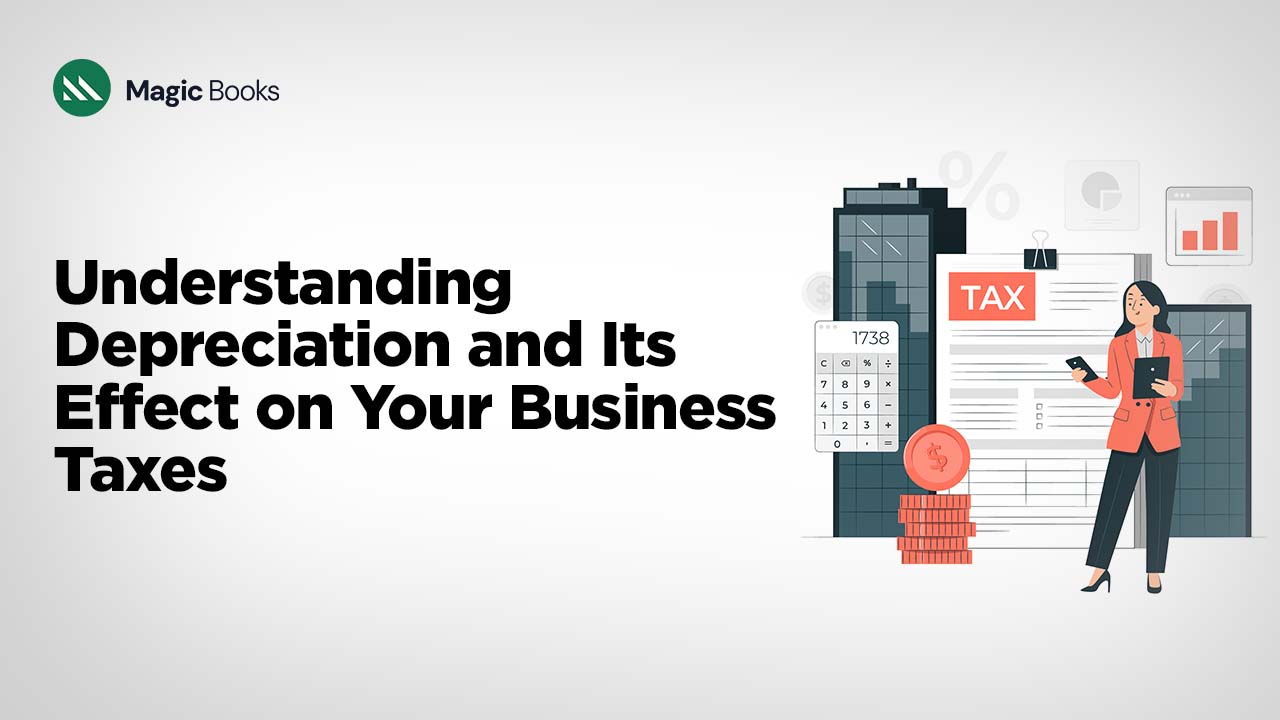Most likely, a small business owner will make use of all possible tax breaks. Still, did you know that you may enjoy a deduction on account of the loss of value in your assets, and it passes most people by?
The word “depreciation” sounds bad. In short, the word means that something you have gradually loses its value. But this can work out in favor of business owners when it comes to taxes.
When coming at busy times to manually input asset information, one has a lot more workload, and in this complicated process and time required, things would start to pile up very seriously. Also, such laborious work is likely going to gobble most staff resources while increasing mistakes and possible errors in the financial management, in case appropriate tools are used for the entire processing.
Let us see how to eliminate the cumbersome task involved with tax depreciation and how experts can aid their clients in making the best choices for their business regarding taxation. Let’s take it one step back, and let’s begin from the very start.
What is Depreciation?
Many of the assets you buy for your business have durability of more than one year in service, though it does depreciate with age, whether it is due to natural causes or other factors.
In simpler terms, tax depreciation represents the amount that an entity can show as its cost in respect to any particular period. This could also be termed as the amortization of the cost of a capital asset over several years or the life of a capital asset. When entities decrease the value of assets, used to generate income, reported by them, it makes it possible for them to declare lower taxable income to the taxing authorities.
As stated, depreciation is the recovery of an asset cost over a number of years. Businesses usually cannot claim the entire cost of property in one year that they made, purchased, or improved and placed in service either in their trade, business, or income-producing activity if such property is a capital expense. Businesses must recover the cost of the property over time until the full cost is recovered through depreciation.
Here is a short look at depreciation, we will talk about property.
Businesses can depreciate property if all these requirements are met. Here is what the business needs to do:
- It is said that an entity owns property even though it incurs a debt upon it.
- Income generated from its use shall be taxed. Only if it is used to generate income, does its use qualify it to be depreciated.
- You should be able to say how long the property will be useful. It must be something that wears out, decays, gets used up, becomes outdated, or loses its value because of natural reasons.
- It should serve the business for a long time after the business has begun using it.
- Never depreciate excepted property. Excepted property is one form of intangible property, certain term interests, capital improvement equipment, and property placed in service and sold during the same year.
Depreciation on an Income Statement:
A company’s income statement will include depreciation expenses. It will be reported after all revenues, cost of goods sold (COGS), and operating expenses have been reported and before earnings before interest and taxes (EBIT). EBIT is used to determine a company’s tax expense.
The total depreciation expenses appear as accumulated depreciation on the balance sheet of a company. This amount is subtracted from the total fixed assets reported. Accumulated depreciation, therefore, increases over time because each month, the monthly depreciation expense is added to a company’s assets.
When the assets are finally retired or sold, the total depreciation amount on the company’s balance sheet is taken off removing the assets from its financial statements.
What are the tax depreciation methods?
There are a few common methods for computing depreciation. The most used ones are straight-line, double-declining balance, units of production, and sum-of-the-years’ digits.
Straight-line depreciation:
This method is usually followed because it is simple and there is no other advanced method of calculating depreciation that is required. In this method, the expense is constant each year throughout the useful life of the asset.
The formula for straight line depreciation is:
The following is the equation for straight-line depreciation.
= (Cost of the asset – Estimated salvage value of the asset)/ Useful life of the asset
Double-declining balance (DDB):
It differs from the straight-line method because it incurs more in the initial years of its useful life and its cost of depreciation is less in latter years.
The various necessary steps of calculation involved while ascertaining the double-declining balance are computation of the depreciation rate, computation of the depreciation expense, and computation of the ending period value, etc.
You should apply this procedure in the following cases:
- To reveal more costs now and move the recognition of profit to some future date.
- Its usefulness is being consumed at a higher rate.
- Units of production method
This determines the value that can be attributed to a firm’s money-making assets before these deteriorate. It would make an excellent choice if there is intensive usage over time of the asset. Such assets may include equipment, vehicles, and machines.
The formula for the units of production method is:
[(Original value – salvage value) ÷ estimated production capacity] x units per accounting period = units of production depreciation
Sum-of-the-years’ digits (SYD) method
It should be used in the SYD method if an asset tends to depreciate much faster or, conversely, if more is produced in its initial years.
This is the process that helps to calculate the depreciation of any asset; in other words, depreciation is more in earlier years and less in later years.
There are a number of steps one has to take when applying this method:
- Calculate the depreciable amount
- Calculate the sum of useful life
- Calculate depreciation factors
- Calculate depreciation for each year
What is MACRS?
Modified Accelerated Cost Recovery System is also termed MACRS, which is the required tax depreciation system to use within the United States. The property must have begun its use after 1986.
MACRS is assisting a firm in paying the costs of taxation on assets. The corporation pays tax by claiming allowances on specific assets over many years. The MACRS utilizes two deprecation systems-the more prevalent General Depreciation System, and also the Alternative Depreciation System. According to the IRS, such systems offer methods and duration for calculating deductions from the deprecation systems.
MACRS cannot be used on the following property to write down:
- Property placed in service before 1987.
- Any property owned or used in 1986.
- Intangible property.
- Films, videotapes, and records.
- Some business or partnership property that was acquired tax-free.
- Property elected to be excluded from MACRS.
When depreciating the value of the property that was used before 1987, use the Accelerated Cost Recovery System (ACRS) or the same method that was used before.
Tax depreciation and state-level problems
As said above, the concept of tax depreciation can be pretty tricky and problematic. This is mainly because most states do not follow federal guidelines.
Certain states have adopted the modern IRC and others have diverged from the IRC rules. The partial agreement or agreement of the states is done on a selective tax year under the federal rule in certain states. Such actions have made the difference and more pain while figuring out depreciation.
Rules and requirements vary by state. In fact, many states do not have to follow what the federal government has implemented. Because these states have divided themselves from the federal guidelines, tax professionals must determine which deprecation is different at the federal and state levels when applying it. Because of these complexities, it will be wise to use a solution that offers complete and comprehensive state calculations. This will save preparers ample time and the probability of errors.
What is bonus depreciation?
Bonus depreciation is a temporary tax break for businesses that will end in 2027. It accelerates how fast businesses can deduct the cost of certain assets by allowing them to write off a large part of the cost in the first year they buy it. The remaining cost is then deducted over several years using standard depreciation.
It passed the Tax Cuts and Jobs Act in 2017; the tax law indeed very significantly changed bonus depreciation.
It previously cut the bonus depreciation to 50% and increased it to 100%. It means businesses are now allowed to write off 100% cost of the eligible property in case acquired and placed to use after September 27, 2017, but before January 1, 2023.
As of December 31, 2022, the bonus percentage for 100% bonus depreciation ended. However, going forward, unless a law changes it, this percentage will go down by 20 points every year for any property that is used after December 31, 2022, but before January 1, 2027. After that, the bonus depreciation is dead.
For example, bonus depreciation is 80% in 2023. Then it reduces by 20 points to 60% for 2024. Bonus depreciation is no longer available 100%, but it still becomes a significant avenue for business clients to save on taxes since it allows them to immediately claim the full cost of eligible business property in the first year of acquisition.
Does depreciation increase taxable income?
No, because they enable the businesses to amortize depreciation as an expense to their income tax return within a certain period, lowering their net income and ultimately their taxable income. Depreciation helps the business recover part of the costs it expended on specific types of assets. Depreciation will alter the tax value of an asset. The amount of depreciation will first depend on the knowledge of tax basis for an asset. The tax basis of an asset is its cost plus other additional costs or adjustments that apply based on how the asset was acquired. The taxpayers reduce the basis of an asset using allowed depreciation. A firm may decrease its total tax basis through depreciation deductions in the tax return.
Do you get tax help for depreciation?
Yes, depreciation is an annual income tax deduction. Business people can claim this deduction because of the actual loss in value of some assets.
Depreciation therefore helps businesses recover the cost of some assets through the annual withdrawal of part of the cost until all the cost is recovered in full. This would bring the value of properties and machinery in a company down, which reduces the earnings figure for calculating taxes. The amount used in computing taxes would decrease since it is now reduced from the total value. Several methods calculate the depreciation of an asset; the choice depends on the kind of industry involved. These methods of depreciation include the straight-line, declining balance, sum-of-the-years’ digits, and units of production methods.


